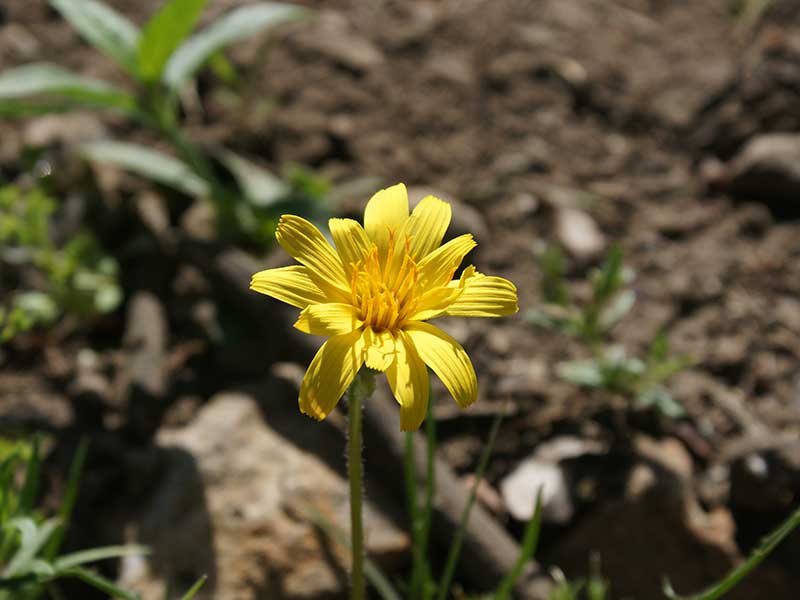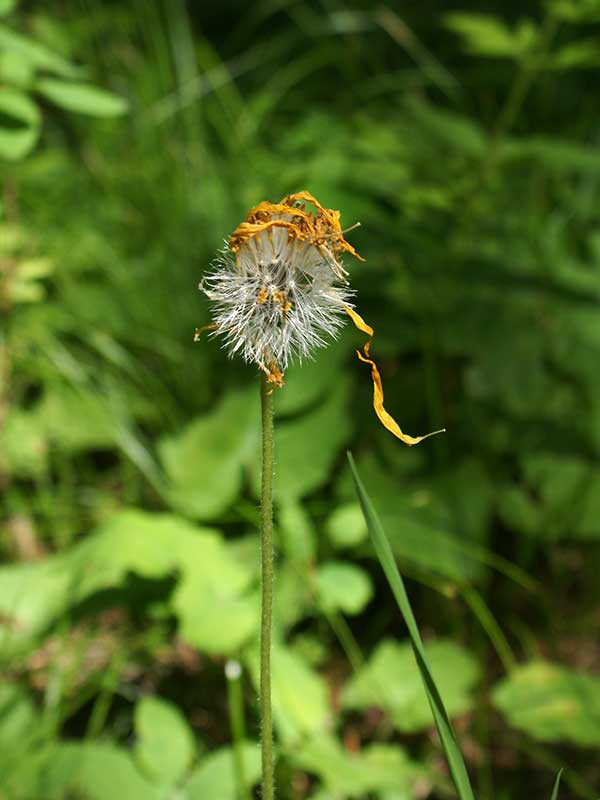Agoseris glauca / yellow false dandelion
- yellow, dandelion-like flower – same size and color
- long-ish, thin leaves growing at ground level (a rosette); no lobes or pointy bits
- blooms in spring and summer
- shade intolerant but on sites ranging from moderately dry to wet
Also known as: pale agoseris, prairie agoseris, short-beaked agoseris, pale mountain dandelion, goat chicory
Synonyms: Agoseris altissima, A. apiculata, A. lacera, A. leontodon A. pubescens
See also: Taraxacum offinalis / dandelion, Agoseris aurantiaca / orange mountain dandelion
The yellow false dandelion is a perennial herb propagating by seed. It is tolerant of nutrient poor soils and moisture levels ranging from moderately dry to wet, but only in exposed areas – it does not tolerate shade. Look for it in sagebrush scrub, in open areas of conifer forests, or on alpine slopes.
The plant itself is a rosette of leaves either erect or lying flat or somewhere in between. The leaf blades are long and thin, often without lobes or teeth, although those are both possible just to mess things up. Indeed, various write-ups describe the leaves as variable in shape and sometimes as long as the plant is tall. A number of possibilities are shown in the gallery. The leaf surfaces are shiny and – again usually – without hairs. If you rip or break a leaf, expect a milky white latex to bead up at the broken surface.
Yellow false dandelion blooms in spring or early summer (in the Valley), but flowering plants can also appear much later. Each flower head has its own stalk which rises above the rosette of leaves. There are no leaves on the stalks. Each head is an inch or more across. Individual florets – all of them rays, none of them disks – are bisexual and are insect pollinated, unlike the real dandelion which is sterile (but still produces pollen). The ends of the ray florets (petals) are at most only very slightly toothed (dentate). The petals have prominent veins running their length.
The fruits are small achenes with fluffy plumes (pappus), like other dandelions and other members of the chicory tribe.
Other than the fact that this is a pretty little native plant and flower, there isn’t much to say. It isn’t edible (other than the latex being a bitter substitute for chewing gum), it isn’t poisonous, it has no folklore, so just enjoy it for what it is.
| Color | |
|---|---|
| Family | |
| Blossom size | |
| Inflorescence size | |
| Inflorescence type | |
| When? | |
| Where? |




